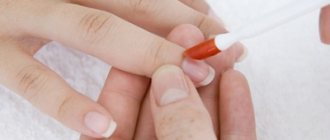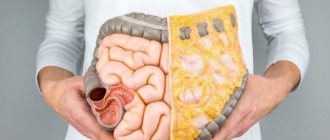Causes of peeling heels
Why does the skin on the heels of my feet peel? Is this problem cosmetic or due to physiological factors?
The causes and method of treating peeling of the skin on the heels are closely interrelated. That is why it is necessary to identify the sources of the unpleasant dermatological phenomenon.
So, peeling of the skin of the heels can be caused by the following factors:
- Drying of the dermis. This process occurs not only in the summer, although in the warm season the feet are more exposed to sunlight and wind. Winter indoor air also has a negative effect on the skin, not helping to moisturize and soften the skin.
- Uncomfortable shoes. May provoke a violation of the water-fat balance of the dermis. As a result, the latter is injured and loses its elasticity. In addition, low-quality materials from which shoes are made can cause allergies and itching.
- Poor nutrition. Neglecting the principles of proper nutrition can lead to a deficiency of vitamins A, E and F. They are responsible for the condition of the skin. The lack of these substances leads to drying of the epidermis and the appearance of cracks on it.
- Fungus or mycosis. It is considered the most common cause of dry and cracked heels. At the same time, the latter acquire an extremely unsightly appearance.
- Various diseases (diabetes, gastritis, ulcers, etc.). Cracks and peeling on the heels caused by human diseases are quite difficult to eliminate. At the same time, all efforts should be aimed at combating diseases. This requires the help of a qualified doctor.
- Excessive care. It’s a paradox, but in some cases the skin on the heels peels precisely because of excessive care for them. In particular, excessively frequent peeling contributes to changes in the condition of the skin, which does not allow the epidermis to recover.
- Pregnancy. A special condition of a woman’s body. It is during this period that hormonal surges, deficiency of iron and other substances, stress, anxiety, etc. are observed. All this is not reflected in the best way not only on the nervous system of expectant mothers, but also on the condition of their skin, resulting in peeling of the heels.

Dry heels - treatment with pharmaceutical products
In the pharmacy you can find many products that are aimed at solving not only medical, but also cosmetic problems. So, if your heel is dry and cracking, then try using the following medications:
- “Five Days” is a nourishing cream with a rich composition, thanks to which your legs will simply be transformed. It has not only nutritional, but also disinfectant properties. Thus, in addition to healing cracks, fungal diseases will also be prevented.
- “Sea Wolf” is an effective budget remedy that combats a lot of problems (from the aggressive effects of water, sun or cold to a lack of vitamins and nutrients). The components of the cream promote rapid regeneration, and therefore your heels will be transformed in the shortest possible time.
- "Bepanten" is a popular remedy that helps cope with skin problems. Thanks to a component such as lanolin, the epidermis softens and cracks heal quickly.
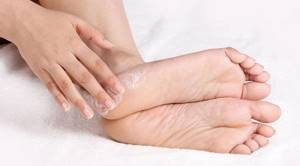
How to get rid of the problem
Eliminating flaky skin on your heels is quite possible. To do this, it is enough to find out the reason why the unpleasant phenomenon occurs and begin to eliminate the alarming symptoms. If peeling heels is not the result of any pathologies of the skin or body, eliminating the problem can be solved using home and salon methods (and sometimes a combination of both).
At home
What should people who have peeling heels do at home and are unable to visit salons? Of course, resort to the use of popular folk recipes:
- bath with salt and lemon. Add 1 tbsp to 3 liters of boiling water. l sea salt and lemon juice. Keep your feet in this bath for 20 minutes, treat with a softening cream;
- herbal decoction Pour 3 tbsp into a suitable container. l. nettle leaves and calendula flowers. Pour 3 liters of boiling water over the herbs and let the mixture boil. Immerse your feet in the slightly cooled liquid for 20 minutes. Apply nourishing cream to dry heels. Onion compress. Grind 2 small onions in a blender, add honey and vegetable oil (1 tbsp each). The mixture is brought to a homogeneous consistency, then a cotton-gauze swab is moistened with it. The latter is placed on the heels, wrapped with cling film on top and the structure is strengthened with a toe. The lotion is kept on the feet for 40-60 minutes and removed with warm water;
- use of oils. Helps heels become less dry. It is most effective to use sesame or coconut oil.

Salon treatments
When it has been found out why the heels on the feet are peeling, and if this process is not associated with any disease, the client can address this problem to a beauty salon. Specialists will offer a number of procedures to eliminate peeling:
- Trim pedicure. It consists of preliminary steaming the feet in a bath and then treating them with pumice, a file or special cutters. With their help, rough skin on the heels is eliminated. After softening the surface of the skin, the specialist removes excess epidermis, moisturizes and nourishes the feet with special ointments and creams. The result of this pedicure is instantly smooth and soft skin on the heels. The downside of this procedure is the fact that after it, the rough skin grows back much faster. In addition, a classic pedicure can cause skin (and other) diseases. Water and steamed dermis are an excellent tandem for the proliferation of pathogenic bacteria.
- European pedicure. Its peculiarity is the absence of mechanical removal of the cuticle on the toes and hands. Instead of nippers, in this case a special softening liquid is used. As for foot treatment, it is not much different from a standard pedicure, except that less abrasive files and pumice are used.
- Hardware pedicure. It is the removal of rough skin using a cosmetic device. A softening substance is applied to the skin of the feet; after some time, its remnants, along with the problem skin, are removed with a device with a special attachment. The bonus of this procedure is that it is performed exclusively on dry skin, which minimizes the risk of various infections.
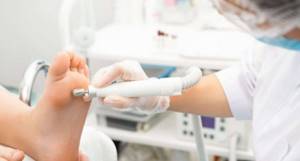
In order not to be afraid of an unknown procedure, you can familiarize yourself with the foot treatment technology:
Attention! Various spa treatments or paraffin therapy can be an effective additional means of combating flaky heels. These methods help strengthen the elasticity of the skin and prevent dehydration.
Compresses for dry heels
Due to the fact that the load on the feet and heels is quite large, they quickly lose moisture. As a result, the skin cracks and becomes rough. To revive dry heels, you need to regularly make nourishing compresses. The following recipes work best:
- Onions will help you remove the top rough layer of skin. It needs to be grated on a fine grater, then mixed with a small amount of honey and milk. Apply the resulting pulp to a bandage or gauze, apply it to the heel and wrap it with polyethylene. Put on thick socks on top and leave the compress on overnight. To eliminate the unpleasant onion smell in the morning, wash your feet well with laundry soap and be sure to apply cream.
- Honey is a real salvation for dry skin. They need to lubricate problem areas, cover with plastic and put on warm socks. It is better if the honey compress remains overnight. After you wash your feet in the morning, be sure to apply the cream.
- If the skin is not too rough, then a green apple will help you solve the problem. Rub it into a puree, wrap it in a piece of bandage or gauze and apply it to your heels. You need to secure the compress with plastic bags and socks. It's better to leave it overnight.
- Perhaps the simplest and most effective is a cabbage compress. You just need to knead it in your hands or beat off a clean sheet with a rolling pin and apply it to your heel. Secure the compress with a bandage, and the next morning remove and lubricate your feet with cream.
- Celandine is a healing plant that helps to cope with many problems. If you have dry heels, you can make a healing compress at home. Chop a fresh leaf (you can beat it with a rolling pin) and apply it to the problem area. As in previous cases, you need to wrap your feet in polyethylene, put on socks and leave the product on overnight.
Prevention of peeling heels
Peeling skin on the heels is not the most aesthetically pleasing phenomenon and can cause many unpleasant moments. To avoid such troubles, you should consider recommendations for the prevention of peeling:
- the skin on rough heels should be removed twice a week;
- before going to bed, apply moisturizer to the skin of your feet;
- consume as many foods fortified with vitamin A as possible;
- in case of visiting public places (baths, swimming pools, saunas), antifungal agents should be used over the next 2-5 days.
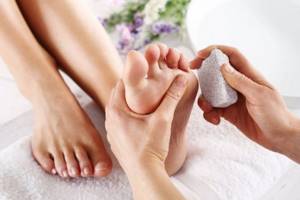
In the absence of concomitant diseases and careful care of the skin of the heels, the heels will continuously delight you with their softness and smoothness.
Recommendations from experts
To avoid unpleasant peeling and painful cracks, it is recommended to take into account several useful tips from dermatological specialists:
- Wearing the right shoes. Often, women's heels peel due to continuous wearing of narrow pumps or other high-heeled shoes. In addition, open shoes (sandals, flip-flops, etc.) leave your feet exposed to dust and dirt. Flying particles clog the epidermis, drying it out and making it rougher. Shoes should not rub your feet and cause calluses.
- Using softening foot baths. They make subsequent peeling more convenient and simpler.
- Drying feet after water treatments. Also, if your feet sweat during the day, you should immediately use fresh socks.
- Compliance with the principles of proper nutrition. Why do women's heels peel? Very often due to the lack of a balanced diet. It will benefit the entire body and skin. It is best to avoid excessive consumption of sweets and eat more vegetables, fruits and foods containing vitamins and proteins. Also, do not forget about the drinking regime and consume the right amount of water per day.
- Systematic pedicure. It is best to do it once every 10-14 days. To do this, it is recommended to have an abrasive file, pumice stone and a sponge on hand. The procedure can be performed on dry or moistened skin. After finishing the pedicure, the surface of the skin is treated with moisturizing cream or oil.


